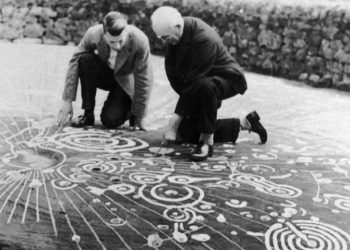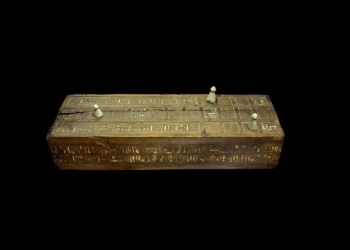A recent study from Lipscomb University reveals that many vibrantly colored books from the Victorian era contain toxic dyes that could potentially poison readers. These hazardous chemicals, found in the pigments used for the books’ type or illustrations, remain a hidden danger even after more than a century.
While earlier studies have identified poisonous substances in historical texts, Lipscomb researchers are now introducing a new analysis technique at the 2024 American Chemical Society (ACS) fall meeting in Denver, Colorado. This method offers a fresh approach to uncovering these potentially deadly materials.
“These toxic dyes could still pose a serious risk in university libraries, public collections, or private bookshelves,” said Abigail Hoermann, an undergraduate chemistry student at Lipscomb University.
Though these books are centuries old, their toxic materials can still be harmful, especially if the cloth covers come into contact with skin or if the chemicals become airborne.
“Our goal is to create a simple method for assessing the risk these books present and to provide guidelines on how to safely store them,” Hoermann explained.
This investigation began when Hoermann and other students, led by Assistant Chemistry Professor Joseph Weinstein-Webb, were asked by librarians at Lipscomb’s Beaman Library to analyze pigments in their 19th and early 20th-century books.
One particularly dangerous substance used during this period is copper acetoarsenite, or Scheele’s green, an arsenic-based dye widely used in Victorian society. This pigment appeared in book covers, wallpapers, and fabrics, and is rumored to have played a role in Napoleon’s death during his exile on Elba.
Arsenic was so common in Victorian times that it was even prescribed as a treatment for various ailments, including cancer, asthma, and skin conditions. However, its presence in everyday items like sugar or flour led to frequent accidental poisonings. Deliberate poisonings also occurred, and it wasn’t until 1840, when chemist James Marsh developed the Marsh test, that arsenic could be reliably detected. This breakthrough helped reduce the use of arsenic in crimes, leading to the regulation of arsenic sales in the UK in 1851.
Arsenic poisoning remains a global issue, affecting around 140 million people today. Symptoms include chest pain, headaches, coughing, and diarrhea, with chelation therapy commonly used to treat it by removing the toxin from the body.
Lead, another toxic element, was also commonly used in Victorian pigments. Lead(II) carbonate, for example, produced a brilliant white color and was used in paint and makeup. However, lead poisoning was common, often resulting from lead’s use in plumbing, silverware, and even wine production. Lead exposure, whether through ingestion, inhalation, or skin contact, can cause serious health issues, including headaches, nausea, and cramps.
The Lipscomb University research team employed advanced techniques to analyze the toxic compounds in their library’s books. These methods included X-ray fluorescence (XRF) to detect heavy metals in the dyes, inductively coupled plasma optical emission spectroscopy (ICP-OES) to measure metal concentrations, and X-ray diffraction (XRD) to identify the specific pigment molecules containing these metals. While XRD has been used to test wallpapers and fabrics, this is the first time it has been applied to book dyes.
Their findings revealed the presence of lead and chromium in the books, particularly as lead(II) chromate, a yellow pigment famously used by Vincent van Gogh. The detected levels of lead and chromium in some books exceeded the safety limits set by the CDC, posing significant health risks if inhaled or ingested over time. Such exposure could potentially poison readers, leading to severe health issues like infertility or cancer.
“This research shows how previous generations unknowingly exposed themselves to dangerous materials, and how these poisons can still be harmful today,” Weinstein-Webb noted.
In response to these findings, the Beaman Library staff took immediate action to seal off the contaminated books, reducing the risk of exposure as the research team continues to identify other harmful elements.
Looking ahead, Hoermann and her team aim to develop a method that allows libraries to test their collections for toxic substances without damaging the books.











